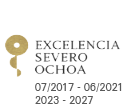
2025/10/28
A new study reveals the connection between the liver and brain in the context of metabolic liver disease
A recent study, published in Science Advances and led by CIC bioGUNE, uncovers a direct connection between the liver and the brain in metabolic liver disease. Cognitive dysfunctions caused by fatty liver can be reversed through liver-targeted siRNA therapy, opening new avenues to treat neurological disorders from a hepatic perspective.
A multidisciplinary research team has discovered that liver alterations associated with metabolic dysfunction–associated fatty liver disease (MASLD) can directly cause cognitive and neurological impairments, and that these effects can be reversed by a therapy exclusively targeting the liver. The findings, published in Science Advances, establish the existence of a “liver–brain axis” that is not only clinically relevant but also therapeutically actionable.
The study, led by Dr. Malu Martínez-Chantar, Principal Investigator at the Liver Disease Laboratory at CIC bioGUNE, member of BRTA, and co-led by Teresa Cardoso Delgado, Ikerbasque Research Associate Professor at IIS Biobizkaia, demonstrates that animal models of diet-induced metabolic liver disease show alterations in social memory and sensory processing, accompanied by dysfunctions in the hippocampus, a key region for memory and learning.
Most promisingly, these alterations were reversed by treating the liver with an innovative siRNA-based therapy targeting CNNM4, a magnesium transporter altered in this hepatic condition, using a highly specific GalNAc-siRNA delivery system.
“Our work demonstrates that fatty liver and hepatic inflammation can directly affect the brain and behavior. This opens up an entirely new therapeutic avenue: treating the liver to improve cognitive function”, explains Malu Martínez-Chantar.
“Moreover, we show how cutting-edge molecular biology technologies and targeted therapies can have a real impact on brain function, combining precision and efficacy”, adds Teresa Cardoso Delgado.
This groundbreaking study was made possible thanks to unprecedented institutional collaboration, bringing together leading research groups such as those of Benedicto Crespo-Facorro (Translational Psychiatry, IBiS), Manuel Romero Gómez (SeLiver, IBiS), Ander Matheu (Cellular Oncology, IIS Biogipuzkoa), Javier Crespo (Digestive Diseases, IDIVAL), the Proteomics Platform at CIC bioGUNE, and Rubén Nogueiras (Physiology, CIMUS). It also involved five CIBER programs: CIBERer, CIBERSAM, CIBERobn, CIBERfes, and CIBERehd.
Image credit: © Figure created using BioRender.
Reference: Delgado TC, Martín-Cuevas C, Hidalgo ACS, Gil Gómez A, Rejano Gordillo CM, Landa J, Gallego Durán R, Goikoetxea-Usandizaga N, González-Recio I, Gil-Pitarch C, Zapata-Pavas LE, Barrenechea-Barrenechea JA, Conter C, Martínez-Cruz LA, Ramos Herrero VD, Nogueiras R, Azkargorta M, Elortza F, Moncho-Amor V, Crespo J, Matheu A, Romero Gómez M, Crespo-Facorro B, Martínez-Chantar ML. Metabolic Dysfunction-Associated Steatotic Liver Disease Alters Brain Function and Behavior: Insights from Liver-Targeted siRNA Therapy. Science Advances. DOI: 10.1126/sciadv.ady9758.
About CIC bioGUNE
The Centre for Cooperative Research in Biosciences (CIC bioGUNE), member of the Basque Research & Technology Alliance (BRTA), located in the Bizkaia Technology Park, is a biomedical research organisation conducting cutting-edge research at the interface between structural, molecular and cell biology, with a particular focus on generating knowledge on the molecular bases of disease, for use in the development of new diagnostic methods and advanced therapies.
About BRTA
BRTA is an alliance of 4 collaborative research centres (CIC bioGUNE, CIC nanoGUNE, CIC biomaGUNE y CIC energiGUNE) and 13 technology centres (Azterlan, Azti, Ceit, Cidetec, Gaiker, Ideko, Ikerlan, Leartiker, Lortek, Neiker, Tecnalia, Tekniker y Vicomtech) with the main objective of developing advanced technological solutions for the Basque corporate fabric.
With the support of the Basque Government, the SPRI Group and the Provincial Councils of the three territories, the alliance seeks to promote collaboration between the research centres, strengthen the conditions to generate and transfer knowledge to companies, contributing to their competitiveness and outspreading the Basque scientific-technological capacity abroad.
BRTA has a workforce of 3,500 professionals, executes 22% of the Basque Country's R&D investment, registers an annual turnover of more than 300 million euros and generates 100 European and international patents per year.
See a large version of the first picture





